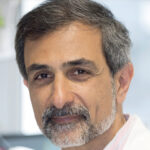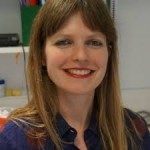Link to Pubmed [PMID] – 25490270
Dev. Cell 2014 Dec;31(5):654-67
The myogenic regulatory genes Myf5, Mrf4, Myod, and Myogenin likely arose by gene duplications during evolution, presumably to address the more demanding requirements of the vertebrate body plan. Two cell lineages were proposed to be regulated independently by Myf5 and Myod to safeguard against tissue failure. Here we report severe muscle loss following ablation of Myf5-expressing cells. Using both lineage-specific and ubiquitous reporter alleles, we show that the remaining muscles in Myf5(Cre)-DTA embryos arise mainly from Myf5(+) escaper cells. Elimination of Myf5(Cre)-DTA cells on a Myod null background did not result in the total absence of skeletal muscles, as would be expected if a Myod(+)/Myf5-independent cell population played a major role in this scenario. Therefore, these observations are incompatible with a previously proposed functional two-lineage model. These findings will have an impact on the interpretation of phenotypes obtained using similar strategies in other tissues.



